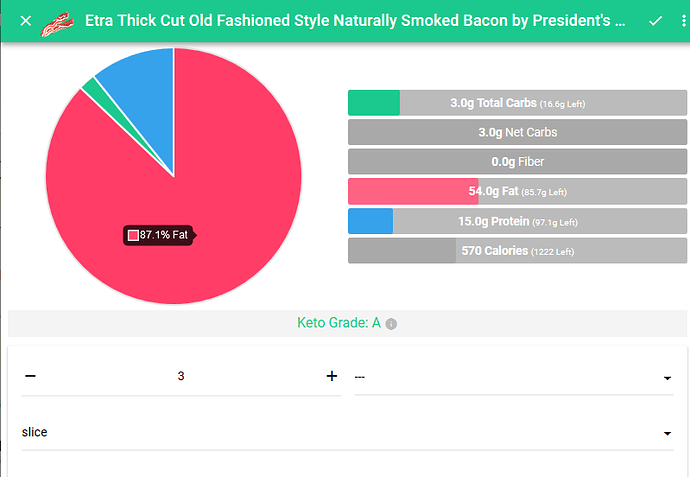It occurred to me recently that the enormous amount of fat grams in the bacon that we eat might only be for the RAW bacon! When we cook the bacon—stove or oven—there is always a lot of liquid fat left over, which we keep of course.
I mean, it’s a LOT of fat:
These 3 slices puts me over half of my day’s “allowance” of fat. This doesn’t make a lot of sense to me.
And then I remembered how Health Canada changed how it allows kombucha manufacturers to list their nutritional facts: they must list how much sugar was used during production, NOT what is left over. This effectively made kombucha out to be more carby than it actually is.
Could this be the same with bacon, macros for RAW bacon? If so, how would I go about figuring out the actual macros of cooked bacon?


 I probably would have figured that out myself, but my brain isn’t functioning optimally these days thanks to a head cold, but my mind can come up with some wacked out ideas that need fleshing out lol
I probably would have figured that out myself, but my brain isn’t functioning optimally these days thanks to a head cold, but my mind can come up with some wacked out ideas that need fleshing out lol